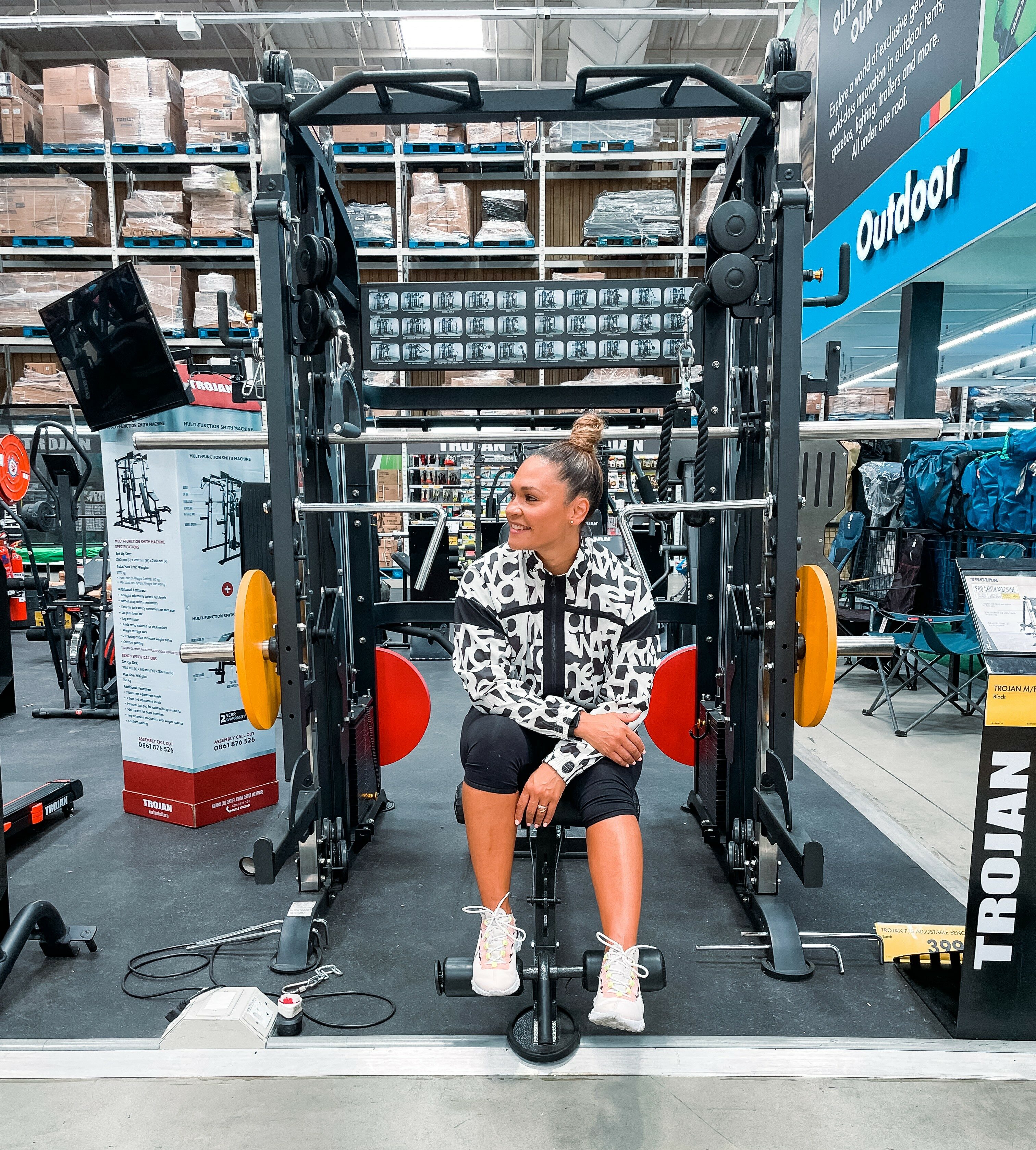
Trojan Health, a South African supplier of home gym equipment has recently launched their new PRO Series; an upgraded version of their well-known home gym offering that caters to the more discerning client, or for use in boutique fitness studios and small-scale commercial settings. The six-piece range includes a treadmill, elliptical, free-runner, stationary bike, spinning bike and the ever-faithful Smith machine.
The marketing team invited me to review and test out the series and share my thoughts on the range.
The Need for a Home Gym
If there’s one thing the pandemic has taught us, with regard to training and workouts, is that having a small home-based gym or training area is vital to staying on track with your fitness goals. I personally struggle to train at home – I need a place to travel to and a reason to get myself out of the house and into the mindset of working out – however, having a few pieces of functional equipment at home has saved me many a time, be it at beating traffic, dealing with a busy schedule or continuing with my training during periods of gym closure.
This need becomes even more pressing considering our national power crisis which has affected South Africans in a multitude of ways. Loadshedding traffic is a nightmare, at multiple times throughout the day, this has led to a shift in the usual or popular gym hours, and it stands to reason that if one can avoid busy gyms and instead train at home, time, energy and sanity are all preserved! In addition, the increasing costs associated with the power inconvenience also mean that, unless training and going to the gym is a very high-priority item for an individual or family, a gym membership is usually the first thing to be cancelled.
If fitness is important to you, then having selected pieces of equipment in a dedicated space within your home is a must. However, curating an effective, affordable, home-based gym takes time, research, and the consideration of several factors:
- Budget: what can you afford now, should you save for a more advanced piece of equipment with more longevity, are you able to extract the most value for your money from the purchase – the answer to this will rely on info from the other points listed below.
- Space Requirements or Constraints: this relates to both the room in question and the piece of equipment. Compact, multipurpose fitness equipment has limitations in the mechanism of use but, given the space constraints of a venue, this is often the only choice.
- Current fitness levels & Biomechanics: this will determine versatility and both free vs constrained motion considerations. Simply put biomechanics refers to the muscular and skeletal structure of your body and the way your body moves taking into consideration the things you cannot change (bones) and those you can through movement (muscles and ligaments, tendons and joints operate in a range of motion).
- Fitness Proclivities & Interpersonal Factors: this could be considered your fitness personality, including your individual circadian biology and the interpersonal climate in which your training will occur, i.e., are you training alone? What activities do you enjoy doing? If you enjoy sports over the gym consider that certain devices may become monotonous for you.
- Quality of equipment: this includes warranties, after-sales & customer care
Despite the obvious benefits of having a home-based gym, the shortcomings are often underestimated and overlooked; large pieces of equipment take up space and often end up collecting dust or getting used for activities other than their intended purpose (a repurposed clothes hanger is usually the most popular). The psychological downside of this is that the defunct exercise machine then becomes a monument of failure; an ode to the fitness goal you still haven’t achieved, the task you neglected to do – yet again, a reminder of the reason you feel achy in the morning. Every time one looks at this obsolete device, one ends up feeling less motivated and more despondent. Eventually, the poor thing is relegated to the dark corner of the garage, given to someone -where it will follow the same fate or, sold on Facebook marketplace. Training at home also requires a programme; this ensures that one stays on track, avoids time wasting and always knows exactly what to do.
The only way to counteract the above sequence of events, too often associated with home gym equipment, is to be prepared and educated: you must have a plan! A desire to train without knowing what you will do daily, weekly, and monthly and how you will progress when you meet goals, will ultimately result in the wrong equipment choices. At the end of the day, the goal of any nutrition or training plan is adherence: what can you do regularly and consistently over the longest period of time?
The Basics
One of the biggest mistakes I see people making when it comes to curating a home or boutique gym is getting the basics wrong. Before you think about purchasing the fanciest machine, start with some free weights either in the form of dumbbells or kettlebells both of which are offered by Trojan (a caveat in this regard, avoid adjustable dumbbells and while there are some good ones on the market, generally their awkward weight distribution can lead to injury when the individual suffers from stability issues, poor posture and biomechanics). One needn’t purchase a full rack of free weights, start low, with one or two options being challenging weights for current fitness & strength levels. Thereafter additional weights can be added to the set. For example, an absolute beginner may consider 1, 3 & 5kg dumbbells as working weights (or 2, 4, 6kg) and either an 8 or 10kg set as the challenging weight sets. As this individual progresses, 12kg and heavier weights can be added to the set. Slight differences in weight options will occur with kettlebells but the premise remains the same.
Now, let’s have a look at the Pro Series in a bit more detail.
Smith Machine
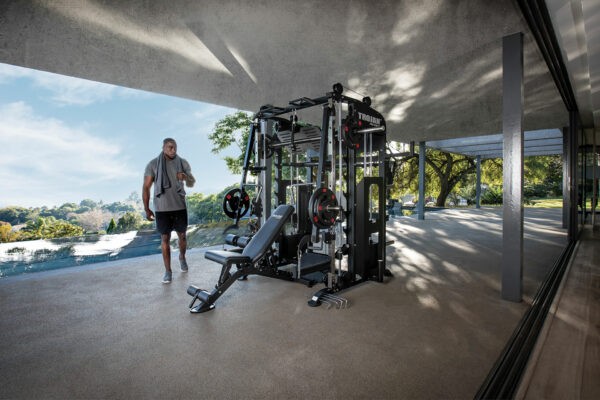
All large, commercial gyms and most medium-sized gyms will have a Smith Machine. Created by American bodybuilder Jack LaLanne aka The Godfather of Modern Fitness, the Smith Machine has been around since the 1950s. It was first used in Rudy Smith’s gym, the machine’s namesake and LaLanne didn’t want to replace free weights but instead wanted an apparatus that could assist with heavy lifts in the absence of a spotter. Using a Smith Machine can seem daunting, it intimidates most beginners, but this can be quelled with a short teaching session. One thing to remember about a Smith Machine is that once the education hurdle has been overcome, it offers a greater deal of variety and longevity as a standalone piece of equipment; it caters for beginner and advanced-level training alike. It comes with a whopping price tag, but this should be put into context: if you have the budget, are committed to training through continuous education and a programme, and you have the space, you’ve ticked three of the five boxes listed above. Not all Smith Machines are created equal though and the Pro Series option offers more variety than the Trojan 1.0 Smith Machine. It will cost you R48 999.00 excluding a bench, and bumper plates, which means you’re heading towards the R60 000.00 mark all-in. This alone would be my reasoning for this machine being one of the last pieces of equipment one should consider purchasing, and when you consider that most exercises performed with the Smith Machine lead to lower recruitment of important, body-wide stabilizers then I’d have to rank it as the least useful piece of equipment on our Pro-Series list for most novice to intermediate trainers. It’s great to use if it’s already in a gym and it certainly should be a consideration if you’re looking to curate an office or commercial gym as it definitely has its place so let’s compare its Pros and Cons from a home gym perspective:
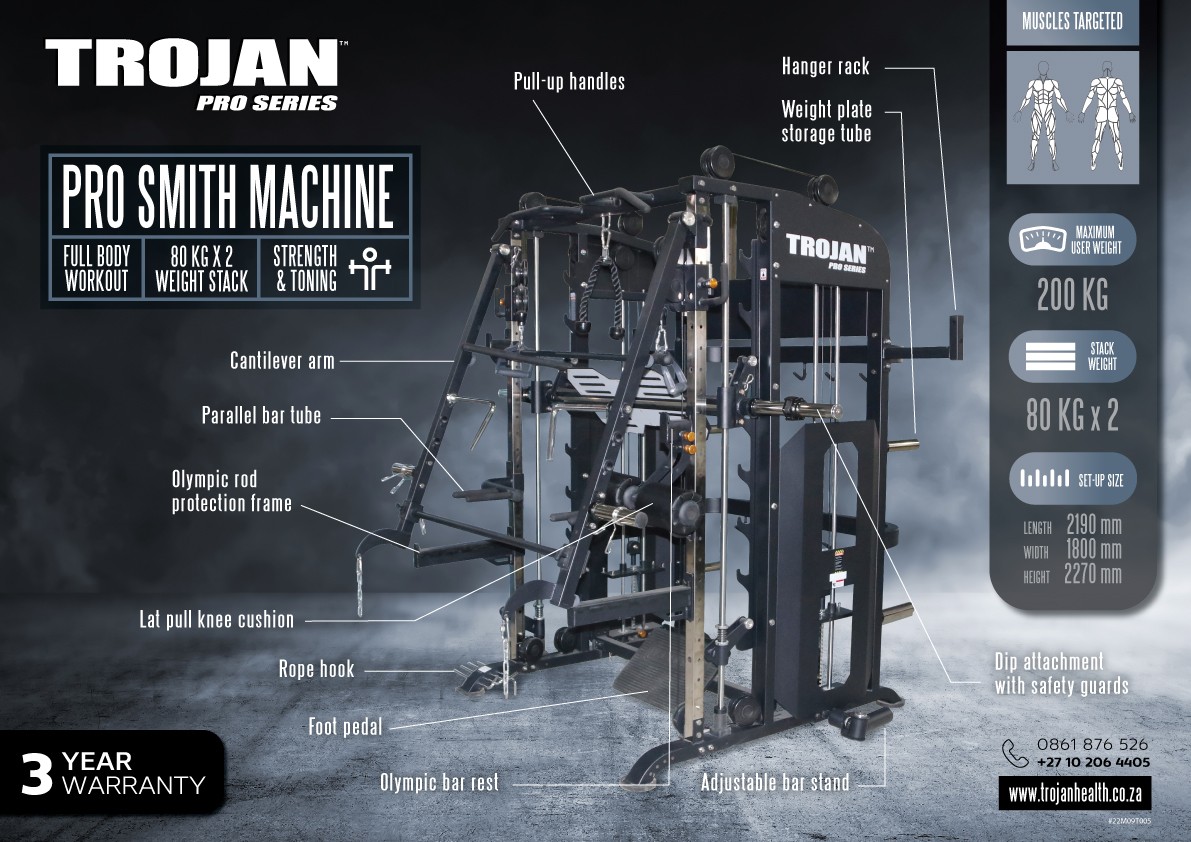
Pros
- Self-spotting and safer option than free-motion squat rack and barbell due to stabilization
- Suitable for all fitness and strength levels trainers
- Supports poor posture, rehab/prehab movement & dysfunctional biomechanics through restricted movement
- Allows for a greater degree of control with challenging weight loads and partial movements
- Greater variety than the Trojan 1.0 machine
Cons
- Expensive for the average user
- Bulky
- Requires some degree of learning to start using it effectively i.e. not as intuitive
- Supports fixed motion over free motion, i.e restricted movement
- Lacks versatility in general and depending on models
- Great primary muscle recruitment (quads, hamstrings, glutes, pecs, biceps etc) but reduced or lack of recruitment of certain stabilizers
- Stabilization can fool novices into lifting more weight which can still lead to injury
- Weight plates are expensive and do not come with the machine
- Bench does not come with the machine
Treadmill & Free-Runner
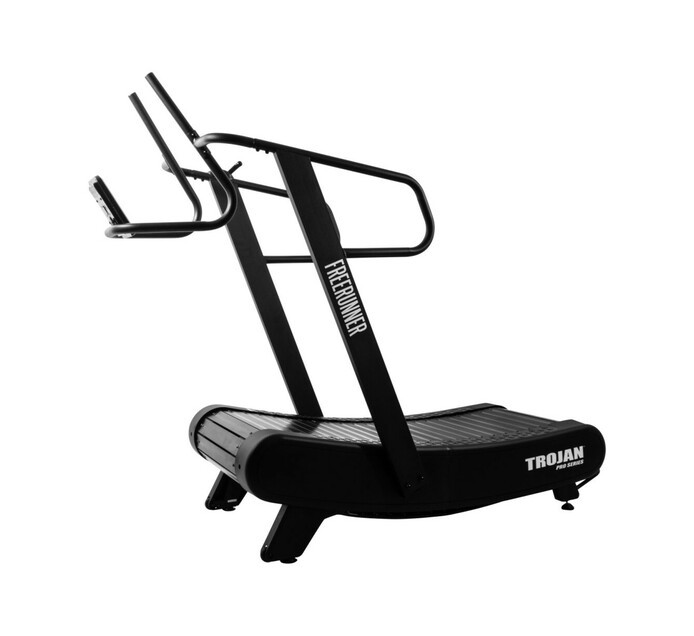
The piece of equipment I like the least in this Pro Series is the free-runner or CNMT ( curved non-motorized treadmill) and the machine I like the most is the treadmill. Usually, the converse would apply because of the benefits associated with using a free runner: improved gait and running technique or form, minimizing running injuries and the variety of drills that it can be used for. Improving running form from the feet up leads to benefits up the chain, it improves neck and shoulder issues and can even alleviate headaches and jaw tension. A free-runner is a non-motorised treadmill, where the running platform is curved and concave, and if used properly it will give you one heck of a workout! Running on a CNMT can require upwards of 25% more energy to overcome the belt resistance and keep momentum.
However, this Pro Series FreeRunner does not feel sturdy enough for me, as the essence of a free runner is self-propulsion and the user needs to feel 100% comfortable to do so on the device – I just didn’t get that sense and don’t think its design adequately allows for agility, power and speed drills that make a CNMT so unique in the treadmill space. Although sprinting and walking will require a shorter stride and therefore a shorter belt or platform, this free-runner feels a bit on the short end when compared to others I have used. The transition from walking to running to sprinting is meant to feel smoother than what the current model offers, and I hope they improve this in their future iterations as it would be a solid inclusion to their lineup. A non-motorised treadmill is better suited for gait, performance, speed and agility targets, however, if endurance and distance are your goals, you will most likely see more benefit from the use of a traditional motorized treadmill. A great advantage of this free-runner though (which does carry some serious value in our current power climate) is that it is motor free and does not require electricity!
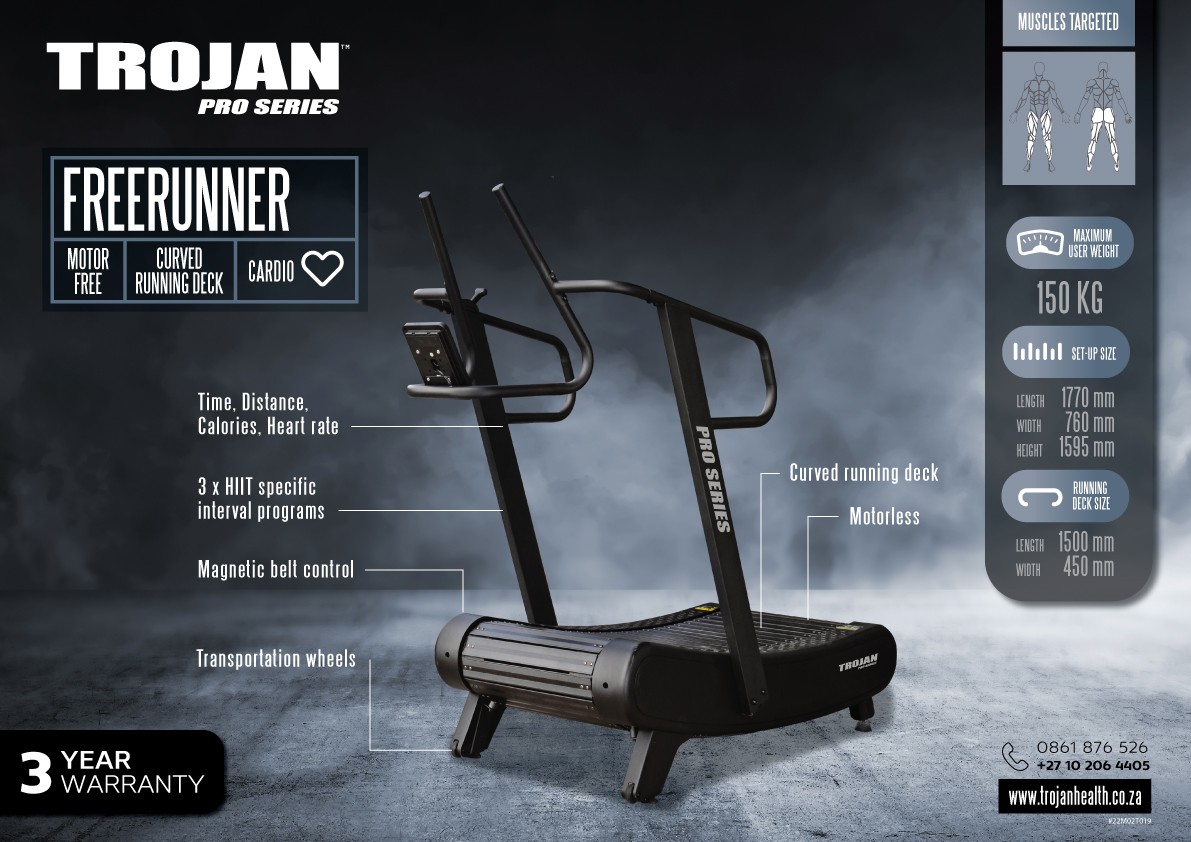
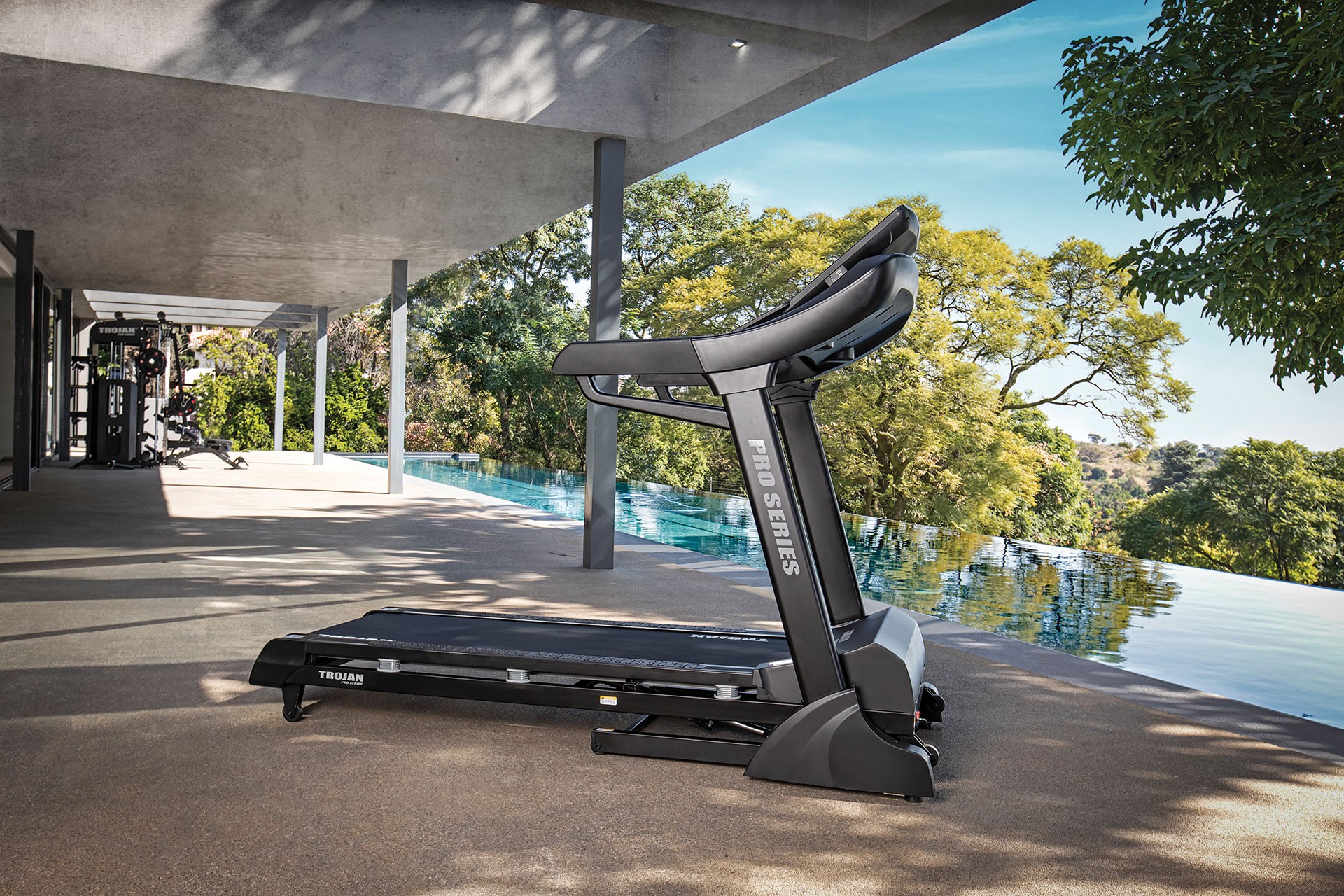
The Pro Series treadmill is the star of the show for me, in both look and feel. At 3.0 HP it may lack in power for avid runners looking to do faster speed intervals or those that will put their treadmill through heavy use (more than 2.5hrs a day or long distances) however its 1510 mm deck is long enough for tall and larger runners, it can manage up to 160 kg and has some impressive, cushioned impact zones to absorb shock. It is foldable, if space is a concern, though I would only do this if necessary. It has a tablet holder and an awesome display with a USB port, and access to fitness apps for workout programs in addition to the built-in workouts.
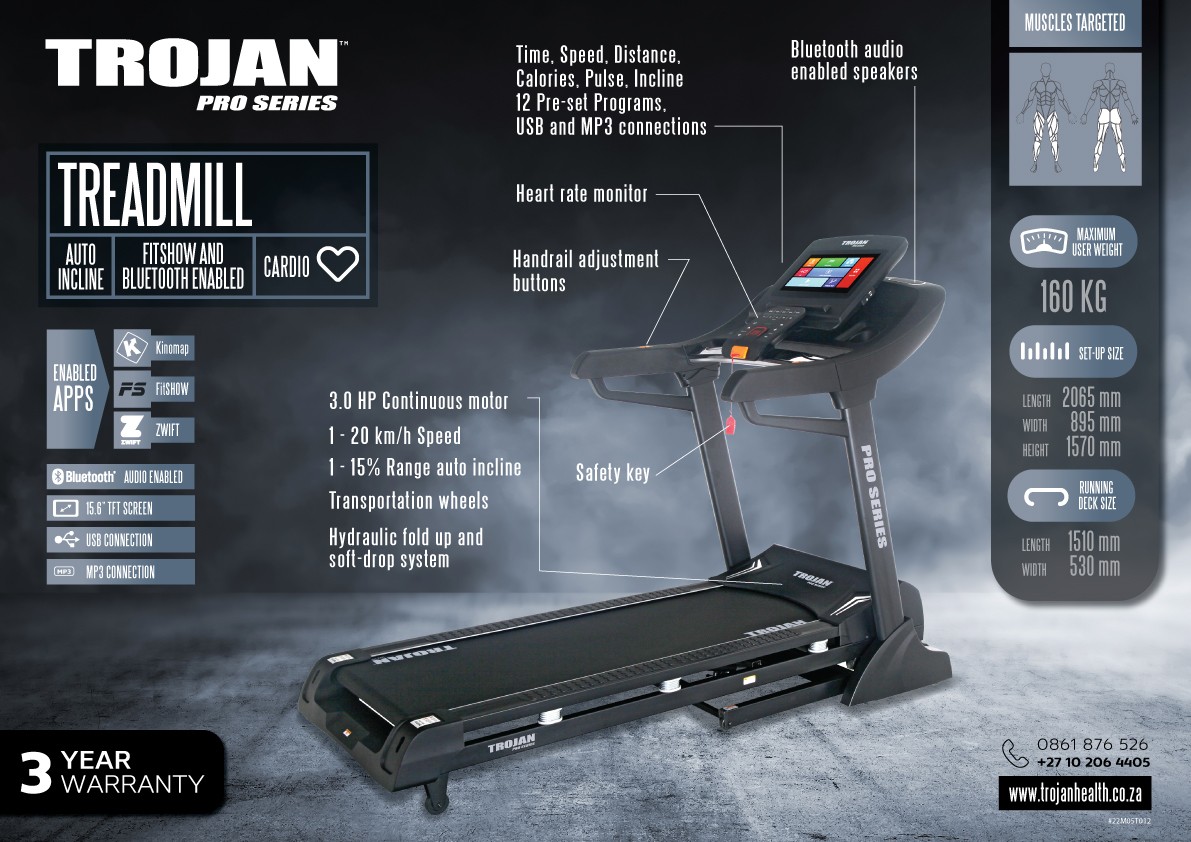
Stationary Bike & Spinning Bike
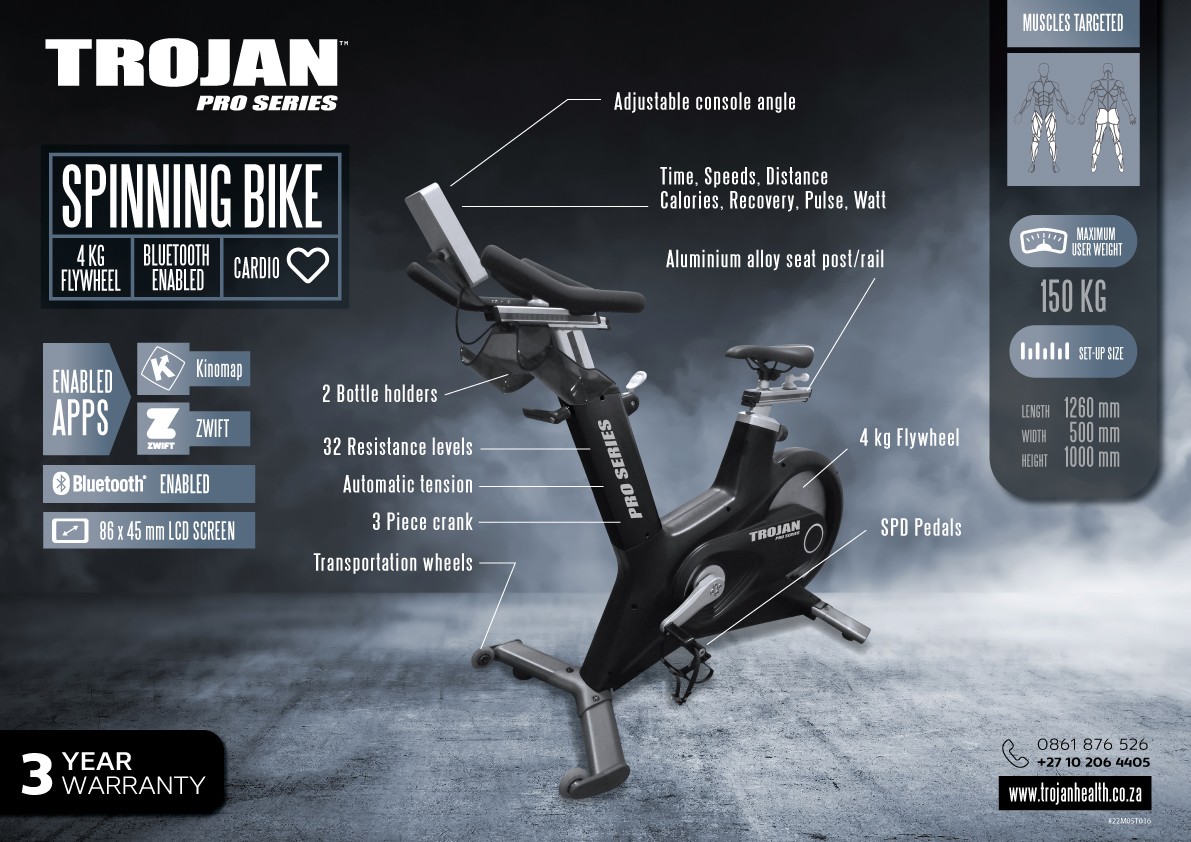
While neither option is targeted at a serious cyclist, and there are more advanced machines for those dedicated to cycling, the spinning bike places the user in a position that is more conducive to the functional position of riding a bike and for this reason, I would recommend the spinning bike over the stationary bike for the average user. It also has SPD pedals and a wattage setting and so it could be used by novice and intermediate cyclists for additional training, recovery and bad weather days. Both bikes are Bluetooth enabled and have LCD screens, however, the spinning bike has a place for not one but two water bottles whereas a water bottle holder is absent on the stationary bike. This may seem trivial, but it vaguely alludes to a differentiating factor between the two bikes: the spin bike has 32 resistance levels, and even though it has a lighter flywheel it will offer greater options in terms of workout intensity and energy expenditure. The stationary bike provides a low to moderate workout and allows for an activity like reading to be done while moving the legs; which may help certain population groups adhere to some movement over nothing at all, it also may be a consideration for special populations with limited mobility and varying degrees of disability but the position of the seat means reduced core activation. The spin bike costs about R2000 more so that is a budget consideration when choosing between the two.
Pros
- Compact
- More affordable
- Easy and intuitive to use
- Reduces load /impact on joints
- Stabilised for those with poor posture, muscular tone and biomechanics
Cons
- Stabilization and balance mean less recruitment of secondary muscles, particularly with the stationary bike
- Can become monotonous
- Can lead to overuse injuries if other forms of training are not incorporated into a programme
- Predominantly cardiovascular workout, the spinning bike allows for greater resistance and standing up can activate a greater amount of muscles
- Offers limited resistance when compared to weight-bearing equipment
Elliptical
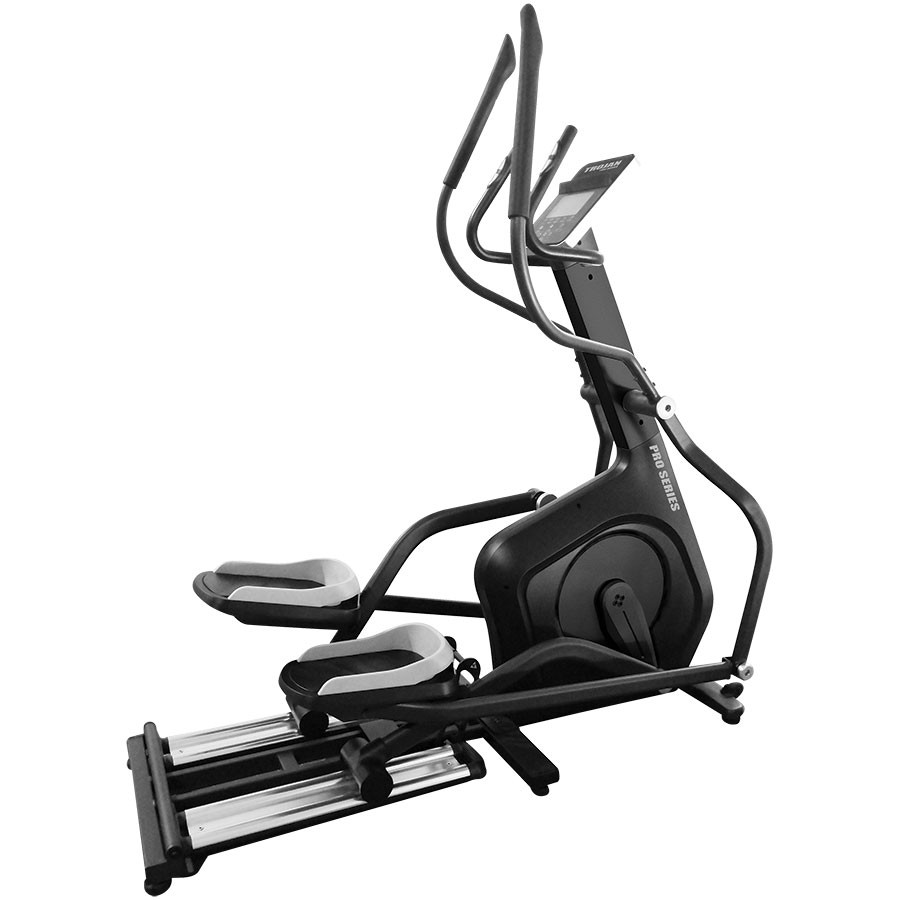
A workout on the elliptical is low impact so it’s easy on the joints, recruits more muscles than the stationary bike and offers the ability to adjust the incline. The elliptical can be a great substitution for either bike option for non-cyclists, however, it does require a moderate level of balance and coordination. The Pro Series elliptical is more stable than the lower range, and cheaper, Orbit 250 and it looks much nicer too!
In general, the elliptical has the potential to provide a more intense workout based on total body recruitment, and some studies show that calorie for calorie, the elliptical can burn more than the stationary bike however, I personally find that I can push harder and for much longer on a spinning bike over an elliptical and this may be due to my biomechanics and the more natural “feel” of a bike for me. Getting on or off an elliptical can be challenging, so anyone with balance issues, knee, hip and ankle issues or even general mobility issues would be better served with a stationary bike.
Final Thoughts
I’ve mentioned quite a bit about mobility, joint health and the impact of exercise on the joints but it’s important to highlight that zero impact is not the goal unless you’ve just come out of surgery or are in some form of rehab programme! Everyday life carries some load, and impact to some degree is unavoidable so preparing your body for that should be a goal. Even walking on solid earth carries some impact! We all need movement against resistance to create bodies that can be injury and pain-free well into old age. If you are experiencing any pain, I suggest booking an appointment with a fitness professional that will incorporate pain-free low impact training with a view to adding safe resistance training to your workouts as you progress.
The Pro Series is definitely a more advanced range both in functionality and aesthetic design, though to add to the latter point, I feel the range could do with some ever-so-slight and subtle improvements that will improve the overall look and feel of the equipment. Attention to stitching and material texture will greatly enhance an already slick range but this is likely the perfectionist in me; most users will consider it a beautifully streamlined and sophisticated range.
Trojan also offers a helpful, interactive “Build Your Gym” tool on their website www.trojanhealth.co.za
References:
- Arandjelović, Ognjen.Common Variants of the Resistance Mechanism in the Smith Machine: Analysis of Mechanical Loading Characteristics and Application to Strength-Oriented and Hypertrophy-Oriented Training. Journal of Strength and Conditioning Research 26(2):p 350-363, February 2012. | DOI: 10.1519/JSC.0b013e318220e6d2
- Schwanbeck S, Chilibeck PD, Binsted G. A comparison of free weight squat to Smith machine squat using electromyography. J Strength Cond Res. 2009 Dec;23(9):2588-91. doi: 10.1519/JSC.0b013e3181b1b181. PMID: 19855308.
- https://jacklalanne.com/firsts/
- Edwards, RB, Tofari, PJ, Cormack, SJ & Whyte, DG. 2017. Non-motorized treadmill running is associated with higher cardiometabolic demands compared with overground and motorized treadmill running. Frontiers in Physiology. 8(NOV). doi.org/10.3389/FPHYS.2017.00914/FULL
.
Disclaimer: Paid post
The author was paid for their time and costs associated with attending the launch and writing a review. This post in no way constitutes an endorsement of TROJAN HEALTH SOUTH AFRICA.

